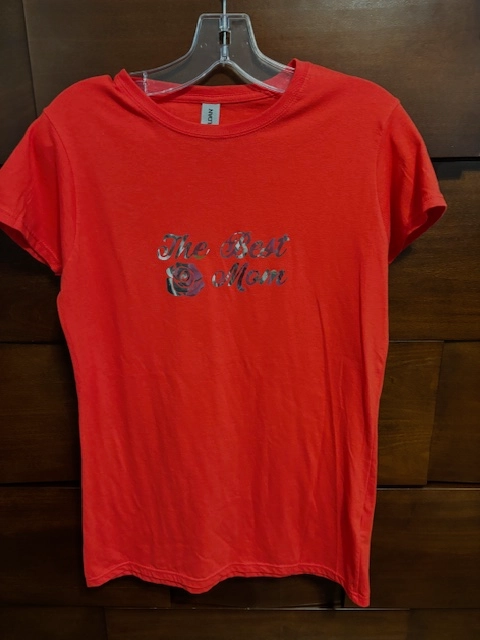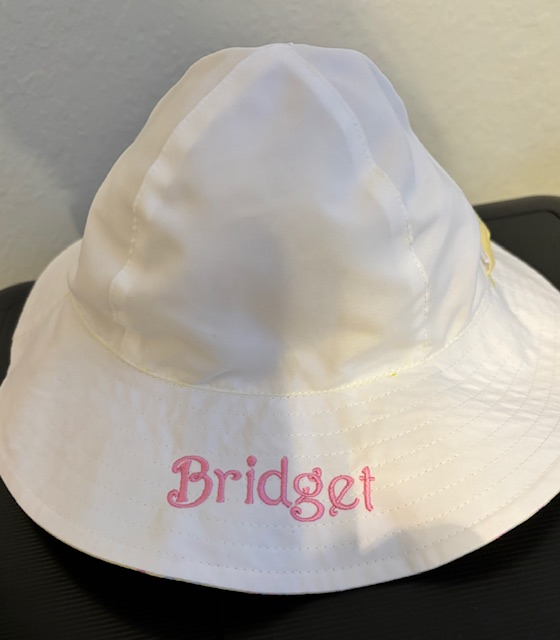Individualized Lab Coats with Embroidery for Medical Professionals
Wiki Article
The Art of Custom-made Needlework: Opening the Keys to Creating Special and Remarkable Layouts
The secrets to producing custom embroidery layouts that mesmerize the eye and leave a long-term impression lie in a fragile equilibrium of technique, creativity, and attention to detail. As we dive into the globe of custom embroidery, we discover the nuanced interplay between thread selection, stitch complexity, and style customization that elevates a plain garment to a work of art.Choosing the Right Needlework Threads
When selecting needlework threads, what vital aspects should you take into consideration to ensure the ideal outcomes for your custom layouts? The option of embroidery string is critical in figuring out the final outcome of your embroidered design.
Additionally, the weight or thickness of the string plays a significant function in the appearance of the needlework. Thicker threads can include dimension and appearance to your layout, while finer threads are perfect for intricate details and small text. Furthermore, considering the color fastness and washability of the string is vital to make sure that your custom designs maintain their high quality and vibrancy over time. By very carefully assessing these aspects and picking high-grade strings that satisfy your details needs, you can enhance the visual charm and durability of your stitched developments.
Discovering Different Stitch Methods
To look into the realm of 'Exploring Different Stitch Strategies', one need to understand the ins and outs and subtleties that each sewing approach offers the art of needlework. Different stitch strategies not only include aesthetic interest however additionally add to the general texture and dimension of the design. One popular stitch technique is the satin stitch, which involves closely stuffed parallel stitches to create a smooth and glossy surface area, ideal for completing shapes and producing bold lays out.On the other hand, the backstitch is a flexible technique frequently utilized for detailing and including fine information. It involves sewing backward to develop a solid line of embroidery. In addition, the French knot stitch adds a responsive component to layouts, best for developing textured accents like blossom facilities or ornamental touches.
Checking out different stitch methods enables embroiderers to play with light, shadow, and deepness within their styles, elevating the aesthetic allure and artistic high quality of their embroidery jobs. By understanding different sewing approaches, one can unlock unlimited opportunities for creating unique and unforgettable custom-made embroidery pieces.
Incorporating Personalized Layout Components
Having actually discovered the details of various stitch techniques such as the satin stitch, backstitch, and French knot, the focus currently shifts towards integrating customized layout elements in custom-made embroidery projects. Individualized layout aspects play an essential duty in making needlework tasks truly unique and memorable. One way to incorporate personalization is by adding initials, names, or considerable dates to the design. This not just includes an individualized touch but additionally improves the sentimental worth of the embroidery piece.An additional way to integrate tailored design aspects is by including icons or concepts that hold unique definition to the recipient or show their rate of interests and character. Incorporating a favorite flower, pet, or hobby-related sign can make the embroidery style a lot more meaningful and customized. Furthermore, selecting shades that resonate with the recipient or align with the desired style can further improve the customization of the needlework project.
Understanding the Art of Shade Sychronisation

One trick element of shade sychronisation is recognizing shade concept. This consists of knowing how various colors communicate heat transfer on t-shirts and aprons with each various other, the emotions they share, and just how they can be combined to develop visually enticing styles. By using color theory concepts, embroiderers can produce unified color combinations that boost the overall look of the layout.
Furthermore, taking note of contrast is important in shade control. Using contrasting shades can aid certain elements of the design pop, enhance legibility, and produce an aesthetically dynamic needlework piece. By understanding the art of shade control, embroiderers can elevate their designs and produce memorable items that reverberate with customers and visitors alike.
Enhancing Structure With Advanced Embroidery Stitches

French knots, for instance, are best for including tiny, elevated dots to your style, resembling the look of grains or creating a textured surface area. Bullion knots, on the other hand, can be utilized to develop twisted, ropelike aspects that add an elegant feeling to the needlework. Seed sewing entails small, scattered stitches that can complete locations with a speckled texture, while turkey work creates cosy, dimensional accents reminiscent of pet fur or foliage. Trying out these sophisticated embroidery stitches permits you to push the borders of standard needlework and produce genuinely distinct and aesthetically attractive textures in your layouts.
Conclusion
In final thought, the art of personalized embroidery includes a combination of picking the ideal strings, discovering various stitch methods, integrating personalized design components, understanding shade control, and improving texture with advanced stitches. By comprehending and carrying out these crucial elements, embroiderers can develop distinct and unforgettable designs that display their creativity and ability. Embroidery enthusiasts can unlock the secrets to developing beautiful and bespoke items that attract attention and leave a lasting impression.Report this wiki page